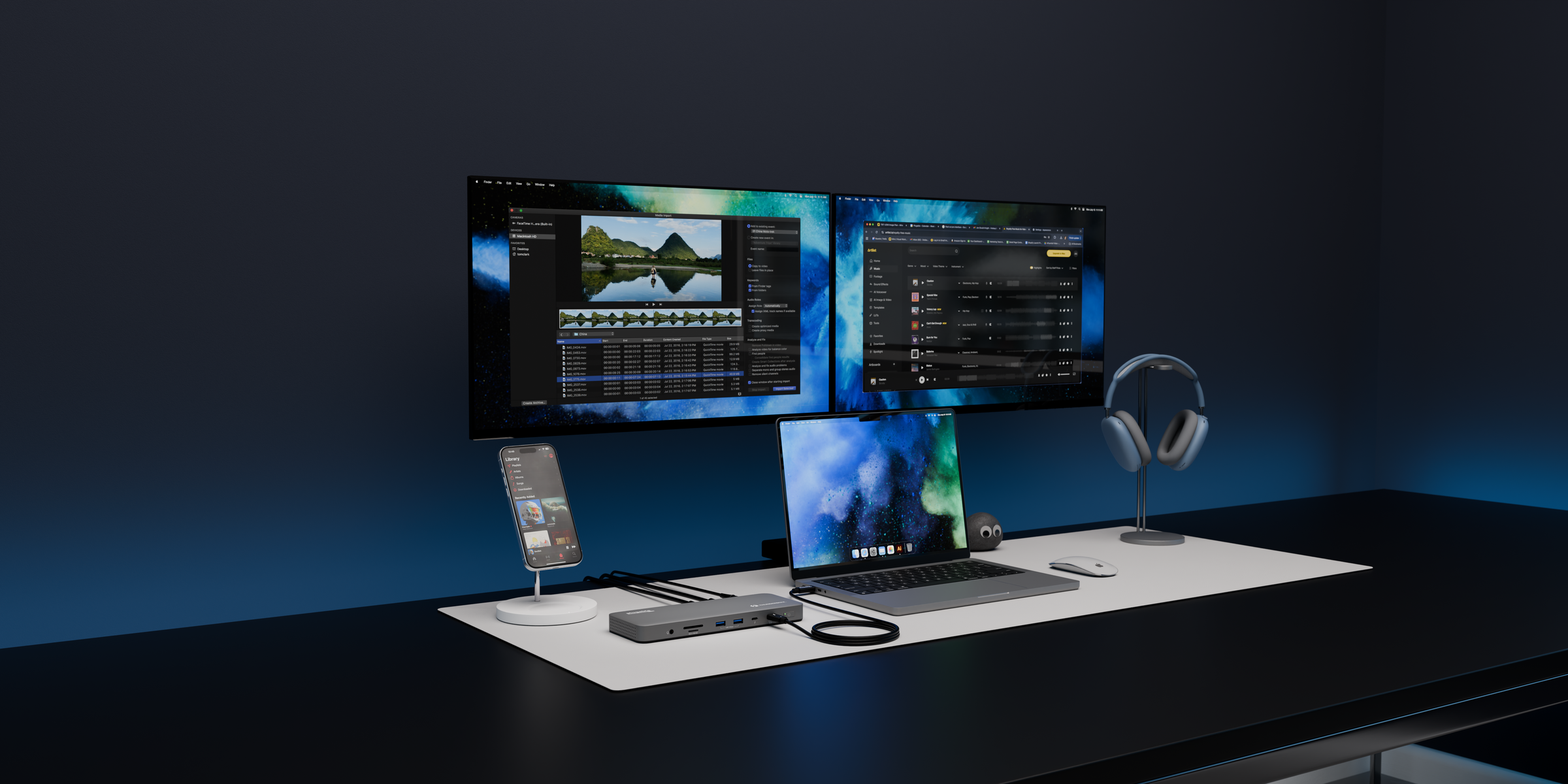Thunderbolt Docks vs. USB-C Hubs: Which One Is Right for You?
Product Owners | September 04, 2025

With so many docking stations and hubs available, it can be overwhelming to decide which one best suits your needs. Two common types are Thunderbolt docks and USB-C hubs, and while they may appear similar, their capabilities are quite different. This article breaks down the key differences to help you make an informed decision.
What is a Thunderbolt Dock?

A Thunderbolt dock is a high-performance docking station that connects via a Thunderbolt 3 or Thunderbolt 4 (and as of recently, Thunderbolt 5) port on your laptop. These docks are ideal for power users who need fast data transfer speeds, high-resolution video output, and the ability to connect multiple devices simultaneously. Additionally, Thunderbolt docks typically do not need software installed to function, making them perfect for corporate settings where 3rd party installs are prohibited or monitored.
Key Features:
- Data Transfer Speeds: Up to 40Gbps
- Display Support: Dual 4K displays or one 8K display (depending on version)
- Power Delivery: Up to 100W (depending on the model, this can be higher) charging for laptops
- Refresh Rates: Depending on model, can support refresh rates higher than 60Hz
Best For:
- Creative professionals (video editors, photographers)
- Power users with demanding workflows
- Users with Thunderbolt-equipped laptops looking for maximum performance
What is a USB-C Hub?

A USB-C hub is a compact, often more budget-friendly device that expands the capabilities of a standard USB-C port. While not as powerful as Thunderbolt docks, they are perfect for general productivity and portability.
Key Features:
- Data Transfer Speeds: 5Gbps to 10Gbps (USB 3.0 / 3.2 Gen 1 or 2)
- Display Support: Often supports one external display via DisplayPort “Alt Mode”, and more displays via software such as Synaptics’ DisplayLink or Silicon Motion’s InstantView
- Power Delivery: Pass-through charging typically up to 85W
- Compact Design: Ideal for travel and light use
Best For:
- Students or general office users
- Travelers who need basic port expansion
- Laptops without Thunderbolt ports
Thunderbolt Dock vs. USB-C Hub: Side-by-Side Comparison
| Feature | Thunderbolt Dock | USB-C Hub |
|---|---|---|
| Max Data Speed | Up to 40Gbps | 5-10Gbps |
| Display Support | Two or more 4K and single higher resolutions | Typically single 4K |
| Power Delivery | Up to 100W | Usually up to 85W (pass-through) |
| Port Variety | More extensive | Basic connectivity |
| Price Range | Higher | More affordable |
| Ideal Use Case | Power users, professionals | General users, portability |
Which One Should You Choose?
- Choose a Thunderbolt dock if you need high-speed data transfer, multiple display outputs, and robust power delivery.
- Choose a USB-C hub if you need simple port expansion for everyday tasks, especially on non-Thunderbolt laptops.
Still not sure which option is best for your setup? Contact our support team for personalized guidance and product recommendations based on your device and use case.
View Other Articles in Category
Related Articles
- At CES, Plugable Introduces Its Flagship Thunderbolt 5 Dock Of 2026
- Head-to-Head: Plugable UD-7400PD vs. Anker Prime 14-in-1
- How to Ensure Docking Station Compatibility in Mixed Laptop Environments
- How to Choose Between a Docking Station and a Hub
- Plugable Products Tested and Approved for the Apple M5 MacBook Pro


Loading Comments